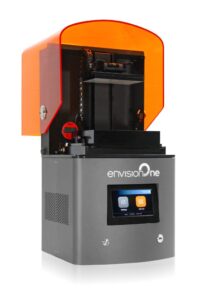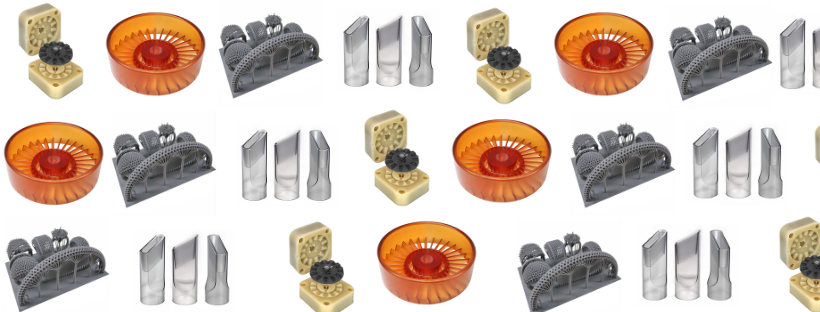New 3D printing technology is revolutionizing many industries – and dental is no exception. The Envision One cDLM dental is the best dental 3D printer on the market. This printer has best-in-class accuracy and uses patented advanced DLP technology to produce prints with a beautiful smooth finish. Plus, with the ability to use a variety of materials, this printer can be used for a range of dental applications include models, castables, restorations, and appliances.
Not sure if the Envision One cDLM is right for you?
Try our 3D printer selection wizard to find the right printer for your needs.
Envision One cDLM Dental Details
Features and Benefits
 The Envision One cDLM Dental printer uses advanced DLP technology that makes it possible to print bigger and smoother parts, faster than traditional DLP or SLA methods. It also prints at an extremely high resolution. These elements together mean prints require no post-processing – tasks that can quickly diminish all of the productivity improvements offered by 3D printing in the first place.
The Envision One cDLM Dental printer uses advanced DLP technology that makes it possible to print bigger and smoother parts, faster than traditional DLP or SLA methods. It also prints at an extremely high resolution. These elements together mean prints require no post-processing – tasks that can quickly diminish all of the productivity improvements offered by 3D printing in the first place.
The advanced features in the Envision One cDLM Dental provide numerous benefits:
- Incredible printing speeds make it possible to print 6 orthodontic arch models in 15 minutes and 10 dentures in an hour
- Require 75% less supports compared to traditional DLP printers
- Utilizes a high-resolution industrial projector with UV optics
- Domeless technology makes it possible to have the highest accuracy in Z
- Layerless technology provides an incredibly smooth finish
- The LED light source wavelength allows for higher accuracy on clear parts and crisper details overall
- Dual linear slides increase stability during the building process – removing any risk of part shift
Specs
| Build Size | 180 x 101 x 85 mm (7.09 x 3.98 x 3.35 in.) |
| Build Speed | Up to 45 mm/hour* |
| Native XY Resolution | 93 µm |
| XY Resolution with Contour Gray Scaling | 60 µm |
| Dynamic Z Resolution | 50 µm to 150 µm* |
| Price | Starting at $20,000 |
*material dependent
The Envision One cDLM dental creates parts with incredible detail and a smooth finish that eliminates the need for post-processing.
Best Dental 3D Printer Materials
The best dental 3D printer will obviously be supported by state-of-the-art materials. The Envision One cDLM Dental is compatible with:
- ABS Tough
- E-Guard
- E-Guide
- E-Guide Tint
- E-Gum
- E-Model
- E-Model HS
- E-RigidForm
- KeySplint Soft for EnvisionTEC
- NextDent C&B MFH
- NextDent Denture 3D+
- NextDent Tray
- Press-E-Cast

Applications
The Envision One cDLM can be used for a variety of both dental and orthodontic applications. Depending on design and material, users can quickly create:
- Models
- Castables
- Direct crowns and bridges
- Bite splints
- Nightguards
- Indirect bonding trays
- Surgical drill guides
- Flexible gingiva masks
- Denture bases
- Diagnostic wax-ups
Lower Costs and Increase Competitiveness with the Envision One cDLM Dental
Adding the best dental 3D printer to your dental business gives you a competitive edge. Dentists can decrease overall costs, provide more convenient care, and have more control over treatment. Dental labs have an opportunity to produce more work faster to increase competitiveness and re-shore production. Starting at just $20,000 the Envision One cDLM Dental is worth the long-term investment for your practice or lab.
Support your dental business with the best dental 3D printer – the Envision One cDLM dental.

